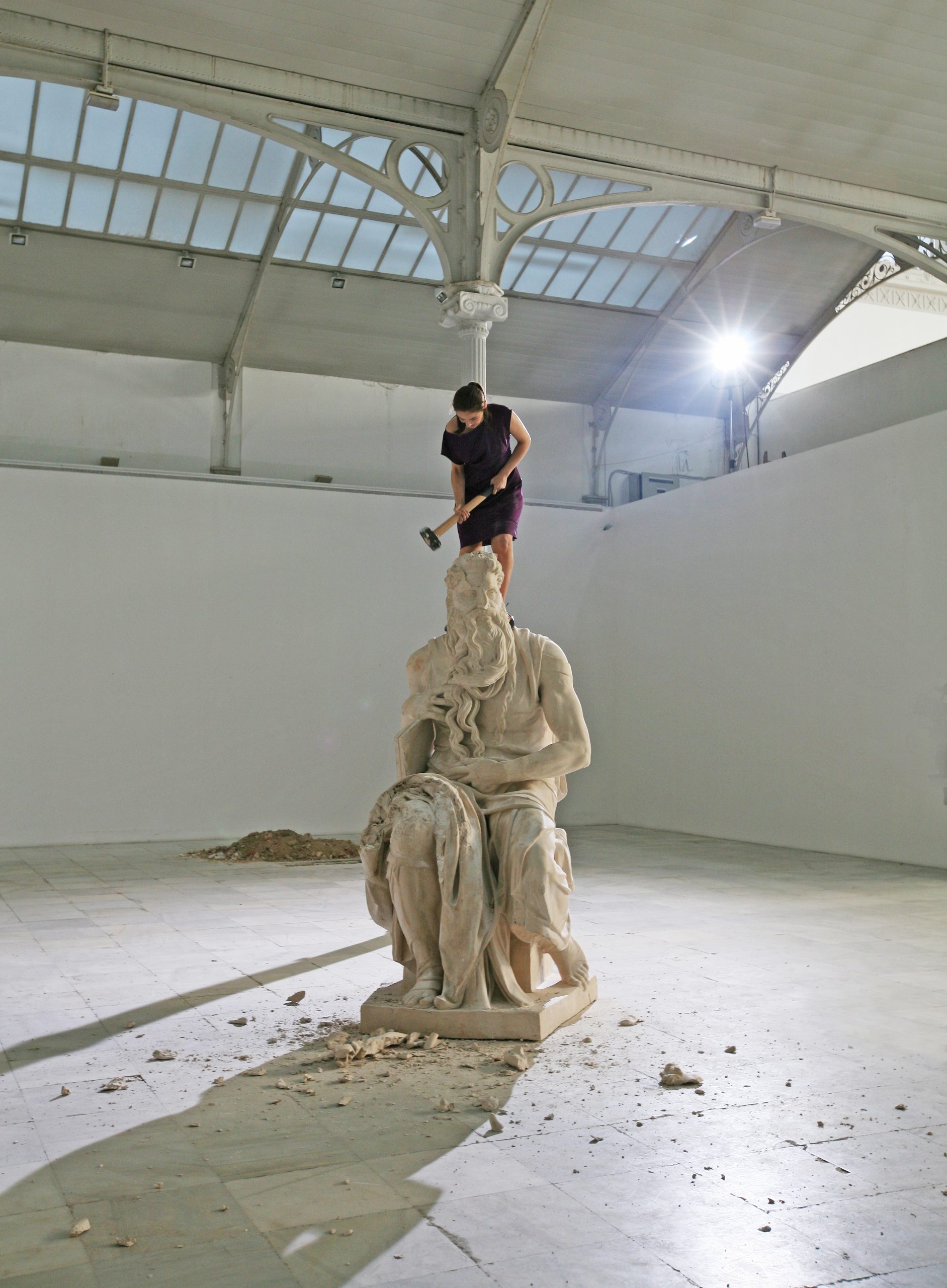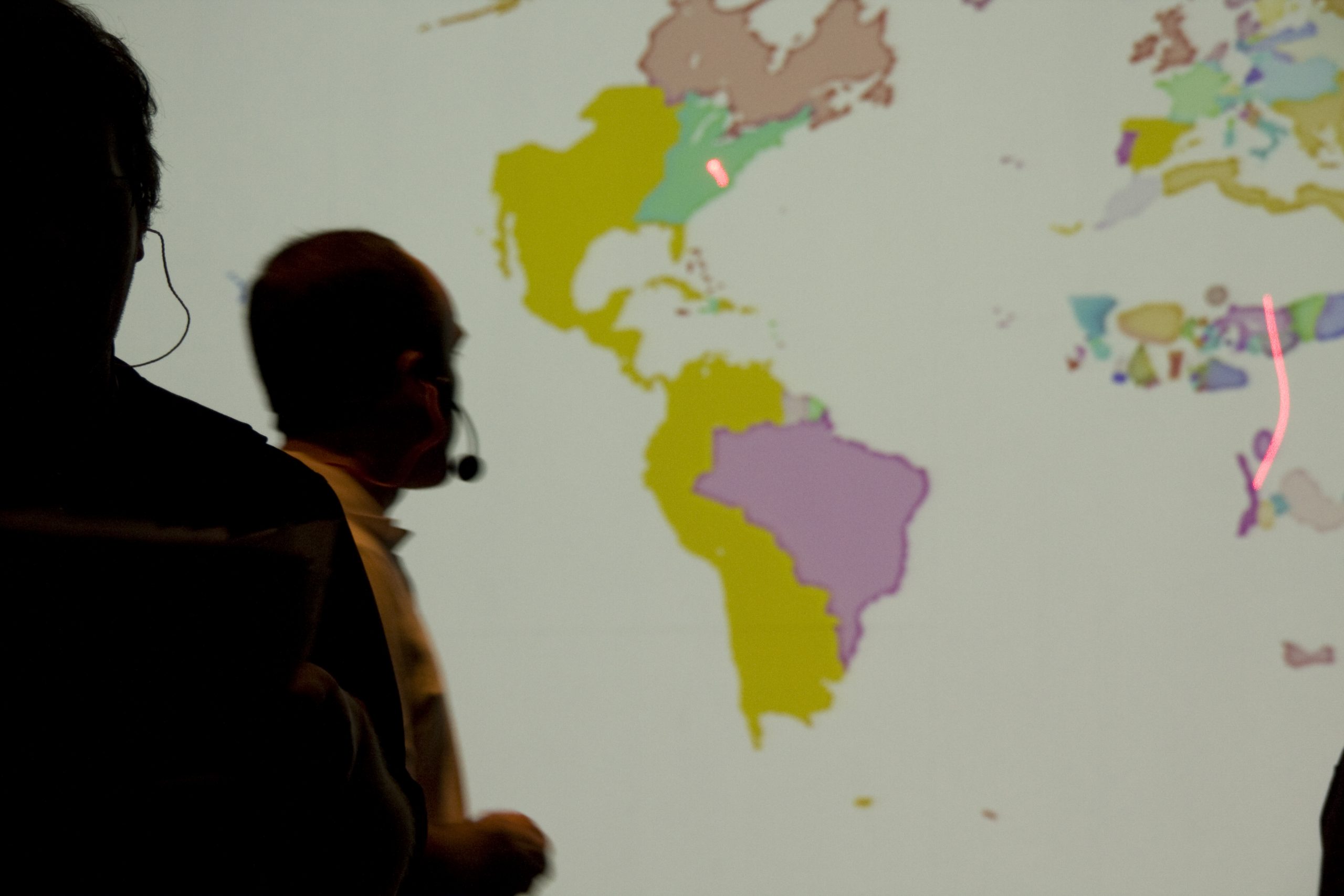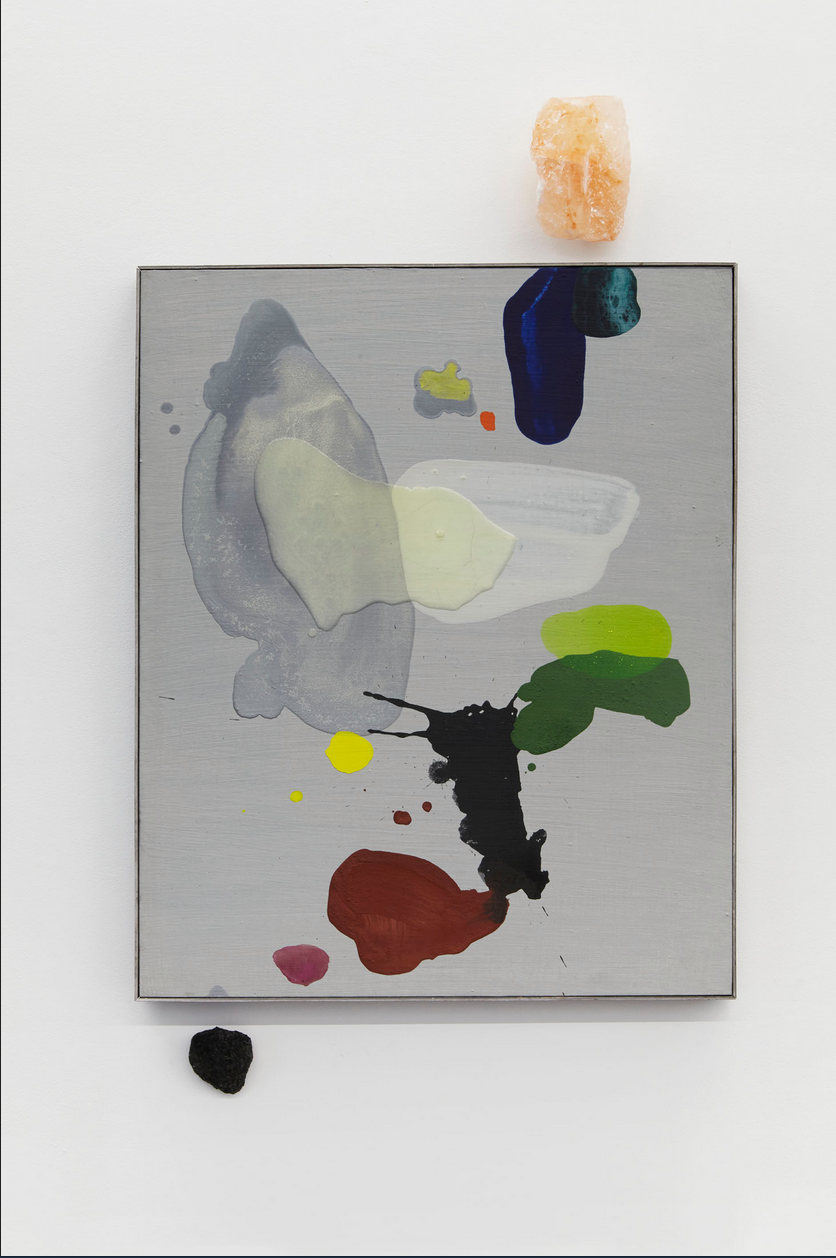Montse Badia
Geysers at the Museu Nacional d’Art de Catalunya is a curatorial project that brings together four artistic proposals resulting from a research process at this museum. Ro Caminal and Cristina Lucas will present the results of this research in 2022 and Raquel Friera and Núria Güell will do so in the course of 2023.
Performative conference held on 16 March 2023 in the Dome Hall of the Museu Nacional d’Art de Catalunya (MNAC). This intervention is part of the “Geysers” programme”, curated by Montse Badia.
Cristina Lucas’s work analyses the control mechanisms of political and economic power, as well as the patterns (of all kinds) that determine our existences. With an intersectional ecofeminist approach, not without irony and a sense of humour, her work focuses on critiquing patriarchal society, and reviewing colonialism and the abuse and the contradictions of capitalism.
With intentions more pedagogical than moralistic, the artist uses narrativity to present contrasting information using resources from official systems, such as maps or monumental sculptures, to which she adds an extra dose of questioning and subversion. The video Habla is well known, in which the artist attacks a copy of Michelangelo’s statue Moses with hammer blows to make it talk. The image of the artist climbing up the statue while physically and symbolically hitting the heteropatriarchal value that the figure of Moses represents with the hammer is iconic.

Habla, 2008. Vídeo HD 16:9. 7′. Cortesia de l’artista.
Rather than as an infallible system of organization, the maps are used “as a system of representation that helps us to understand something that is unknown and which, therefore, reveals things,” as she says. In this respect, Lucas has worked with animations that show maps with movable frontiers, to analyse the idea of nation; with maps that include the gradual introduction of universal suffrage, and, more recently, with charts based on the periodic table, in which the different elements are identified by their symbols, and also their economic value, which is being updated in real time.

Pantone –500+2007, 2007. Vídeo animació, 41′. Cortesia de l’artista.
One of her more recent concerns is the failure of the social and natural contract, and the impact and the instability that this break between society and nature has on our lives at all levels. To stress the urgency of the environmental crisis, Cristina Lucas focuses on these basic elements, minerals, which form the essence of the universe, and also that of the human being and their functions. If we are basically composed of the same elements as our planet, what has happened to make us disconnect so much from our environment?

Orden elemental, 2016. Pantalles LED, programari i connexió a internet. Cortesia de l’artista.
For some time, the artist has been working directly with these elements and pigments, and she makes very free and experimental compositions with oxygen, hydrogen, carbon, nitrogen, calcium, phosphorus, potassium, sulphur, sodium, chlorine, magnesium, iron, fluorine, zinc, silicon, copper, iodine, chrome, selenium, nickel, boron, manganese, lithium, molybdenum, cobalt and Ostein. Each composition contains in the title the philosophical, scientific or thought reference that has brought her there, like, among others, Isabelle Stengers, Oswald de Andrade and Istvan Kenyeres.

Composition Only the Naked Man Shall Understand (Oswald van Andrade), 2020. Pigments, rocks and elements on wood. Oxygen, hydrogen, carbon, nitrogen, calcium, phosphorus, potassium, sulphur, sodium, chlorine, magnesium, iron, fluorine, zinc, silicon, copper, iodine, chromium, selenium, nickel, boron, manganese, lithium, molybdenum, cobalt, Ostein. Courtesy of the artist.
In the context of the curatorial programme “Geysers”, Cristina Lucas exemplifies this dilemma based on a very specific element, cobalt, and its key presence in different contexts:
- In its form as blue glass, cobalt has been used and known since ancient Egypt.
- In its form as a pigment, the most outstanding one is blue, although purple and cobalt grey also stand out. Naturally, cobalt as a pigment is present in many of the works that are in the collection of the Museu Nacional d’Art de Catalunya.
- In the human body, cobalt is a component of Vitamin B12, which it helps to produce red blood cells, for the metabolism of proteins and the maintenance of the central nervous system.
- Cobalt is also an essential element for making electric car batteries and other products of the electrical and technological industry.
But cobalt is an element restricted to the Earth’s crust; it is therefore scarce, incapable of meeting the high demand and, as a consequence, its price is getting higher and higher.
During her research in the collection and the store rooms of the Museu Nacional d’Art de Catalunya, Cristina Lucas found a work that perfectly synthesized the encounter between nature and technology that she was thinking of based on cobalt: Mural for IBM (1978),made by Joan Miró and Joan Gardy Artigas. It is a ceramic mural composed of 406 refractory stoneware tiles and enamels in white, black, blue, red and green. The blue of Mural for IBM is, in effect, cobalt blue.

Joan Miró and Joan Gardy Artigas. Mural for IBM. Ceramic mural of refractory stoneware tiles and enamels in white, black, blue, red and green. Museu Nacional d’Art de Catalunya
As the records of the work show, currently located in the Dome Hall of the MNAC, “the mural was commissioned to Joan Miró and done by Joan Gardy Artigas, and was to be placed in the vestibule of the headquarters of IBM in Barcelona, in the building erected between 1972 and 1974 at number 226, Via Augusta in Barcelona, based on a plan by José Antonio Coderch. In 1994, the Generalitat de Catalunya purchased the building, including the mural, in order to move the head offices of the Department of Education there. Due to the sale of the building in 2013, the mural was removed and deposited in the museum.”
Following her habitual line of work, Cristina Lucas proposes for us a performative conference, covering the astrophysical emergence of cobalt, the way in which it forms part of the planet and our bodies; the functions it performs on the organism; the relationship with art, in the form of blue pigment; its use in industry, especially in technology; the relationship with IBM, and the future of cobalt and its sustainability. In Cristina Lucas’s performative conference, the data, the facts and also the contradictions are present, the flow of information allows us to go beyond the official narratives and discover that some of the ideas for the future that are put forward are not realistic, since natural resources are limited. It is a matter of urgency then, to consider new future scenarios.







